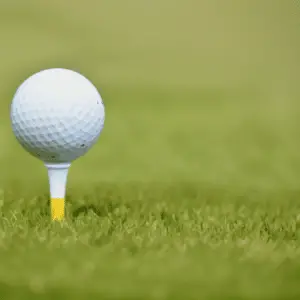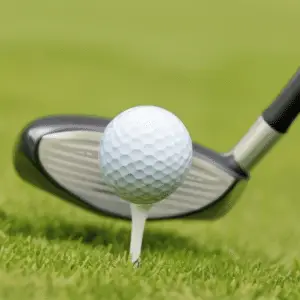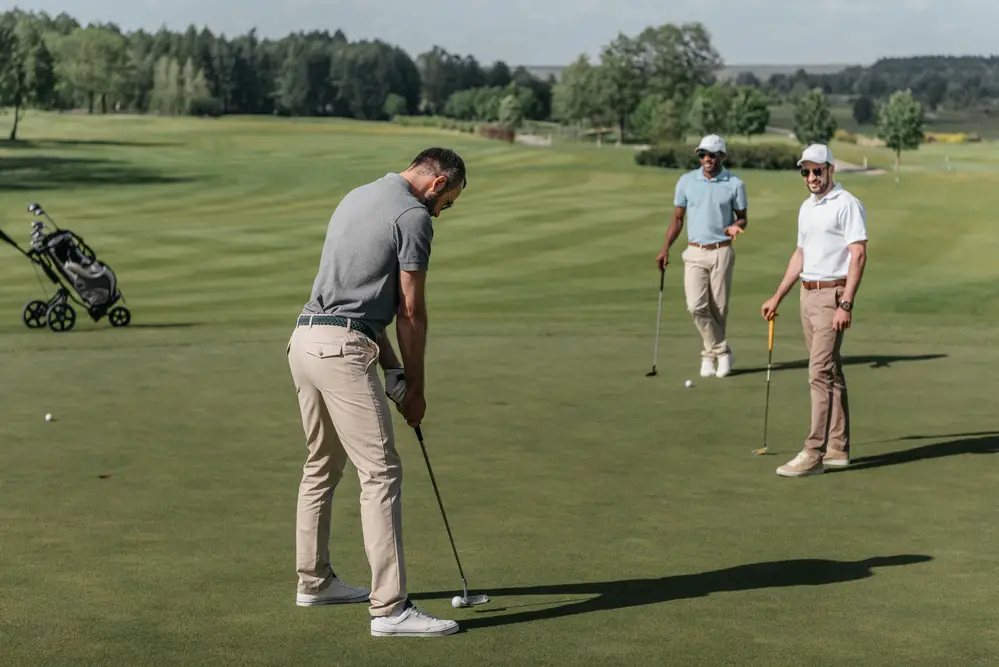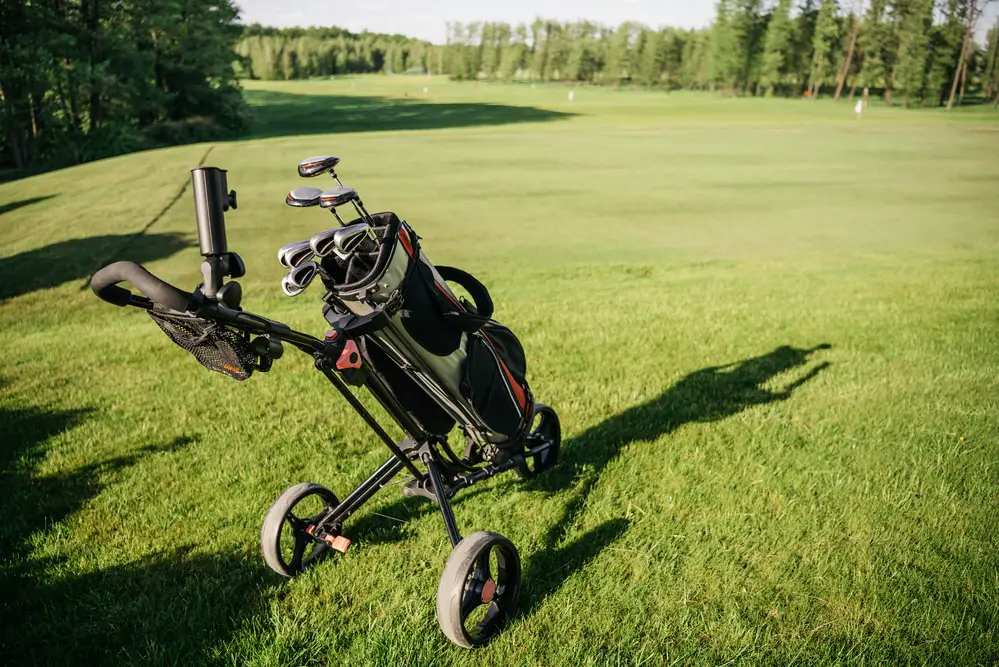Last Updated on October 16, 2023
Golf is a sport that requires precision and finesse, but have you ever wondered if there’s such a thing as too much of either? If so, then you may be interested in learning about the nuances of a weak golf grip. It might sound counterintuitive at first glance – how can something like gripping your club too lightly benefit your game? But believe it or not, this technique has its own unique advantages. In this blog post, we’ll explore what exactly makes up a weak golf grip, the benefits associated with it, how to properly achieve one, and when should it be used. Plus, some common mistakes beginners make while trying to master their weaker grips. So read on for an insightful look into mastering ‘a weak golf grip’.
Table of Contents:
- What Is a Weak Golf Grip?
- Benefits of a Weak Golf Grip
- How to Achieve a Weak Golf Grip
- Common Mistakes With Weak Golf Grips
- When Should You Use a Weak Golf Grip?
- Conclusion
What Is a Weak Golf Grip?
A weak golf grip is a type of grip used when playing the game of golf. It involves positioning your hands on the club in such a way that they are slightly rotated counterclockwise, with the palms facing each other and the thumbs pointing down. This position allows for more power to be generated during your swing as it reduces wrist movement, allowing you to hit shots further than if you were using a neutral or strong grip.
Having a weak golf grip can be beneficial in certain situations, but it is important to understand the fundamentals of how to properly execute this technique before making any changes. Let’s take a look at some of the advantages that come with having a weak golf grip.
Benefits of a Weak Golf Grip
The main benefit of using a weak golf grip is increased accuracy and control. When you use this type of grip, it encourages you to keep your arms straight throughout the swing, which will help you maintain better contact with the ball during impact. It also allows for more flexibility in terms of how much power or spin you want to put into each shot as well as helping you hit straighter shots overall.
Another advantage that comes from using a weak golf grip is improved consistency when playing different types of clubs, such as woods, irons, hybrids or wedges. With this kind of grip, all clubs feel similar in terms of weight distribution and balance, so it’s easier to make consistent swings regardless if it’s an iron or wood off the tee box or hitting out from sand traps.
In addition, having a weaker golf grip can also help improve putting accuracy by allowing for greater wrist action during strokes, which leads to smoother tempo throughout each stroke resulting in better distance control on short putts around greenside bunkers.
Finally, using a weaker golfing stance provides greater stability when taking full swings because less force needs to be applied at the address position due to reduced arm movement compared with stronger grips, thus reducing fatigue after long rounds on the course.
How to Achieve a Weak Golf Grip
It’s important to understand how to properly achieve this grip in order to get the most out of it. Here are some steps you can take to make sure you have a strong, yet weak, golf grip:

1. Start by positioning your hands on the club so that they’re slightly weaker than neutral (the V-shape between your thumb and index finger should be pointing toward the ground).
2. Next, rotate both hands counterclockwise until the back of each hand is facing outward (this will create an even weaker position for the club).
3. Now place your thumbs on top of the shaft with one hand just below where it meets with the other hand at its weakest point (this will ensure that you have maximum control over the club head during swings).
4. Make sure that all four fingers are evenly spaced around the handle and then wrap them firmly around it while keeping pressure off of any single digit or joint area as much as possible (this will help prevent fatigue during play).
5. Finally, adjust your grip strength according to what feels comfortable for you—you don’t want it too tight or too loose. A good rule of thumb is if you can move all four fingers independently without having them slip off, then you’ve achieved a perfect balance between strength and flexibility in terms of gripping power.
Having a weak golf grip is an important part of the game, but it can be difficult to master. In the next section, we will discuss some common mistakes that players make when trying to achieve a weak golf grip and how to avoid them.
Common Mistakes With Weak Golf Grips

When attempting to use a weak golf grip, there are several common mistakes that can be made. The most frequent mistake is gripping the club too tightly. A weak grip should feel comfortable and relaxed, not tight or tense. When you have a strong grip on the club, it can cause your arms to become stiff and rigid during your swing, which will lead to poor ball striking and loss of power.
Another common mistake with a weak golf grip is over-rotating your hands at the address. This means that when you set up for your shot, instead of having both palms facing each other in the neutral position they should be in for a weak golf grip, one palm will face away from the target line while the other faces towards it. Over-rotation leads to an inconsistent swing path and decreased control over where you hit the ball.
It is essential to maintain a connection between both hands during the backswing when utilizing a weak golf grip; failing to do so can result in an effect known as “casting”, which leads to an uncontrolled release at impact and, thus, poor contact with the ball resulting in the reduced distance. To avoid casting, make sure that your hands remain connected throughout your entire swing motion until after you have made contact with the ball.
When Should You Use a Weak Golf Grip?
Here are some tips on when you should consider using a weak golf grip.
Short Shots
When hitting short shots around the green, such as chips and pitches, a weak golf grip can help you control the ball better and get more spin on it. The weaker grip allows for a greater wrist hinge, which helps generate more backspin and keep the ball from rolling too far after landing.
Windy Conditions
A weak golf grip can also be beneficial in windy conditions because it reduces clubface rotation at impact. This means that if there’s any side-to-side movement of the club head during your swing, it won’t cause as much sidespin on the ball, which could make it move off course due to wind gusts or other environmental factors.
Drawing/Fading Shots
If you want to hit a draw or fade shot with precision, then using a weak golf grip will give you more control over where your shot goes by allowing for greater manipulation of face angle at impact. You can open up or close down your stance slightly depending on whether you want to hit a draw or fade respectively while still maintaining accuracy with this type of setup.
Hitting Uphill/Downhill Lies
Hitting uphill and downhill lies requires different techniques than normal flat ground swings, so having a weaker golf grip may help here since it will allow for easier adjustments in body positioning without sacrificing power or accuracy. This is especially useful if there’s an uneven lie between two feet (i.e., one foot higher than another).
Overall, understanding when to use a weak golf grip is important if you want to maximize its potential benefits in certain situations like those mentioned above – all while avoiding common mistakes associated with this technique (which we’ll cover next). Knowing how and when to use this technique properly will ultimately lead towards improved performance on the course.
Conclusion
A weak golf grip can be a great tool for improving your game, but it’s important to understand the nuances of this technique. Knowing when and how to use a weak golf grip is key in order to getting the most out of it. With practice and patience, you’ll soon find that your swing will improve significantly with a weak golf grip. So don’t be afraid to give it a try – you may surprise yourself with what you’re capable of achieving with “a weak golf grip”.



